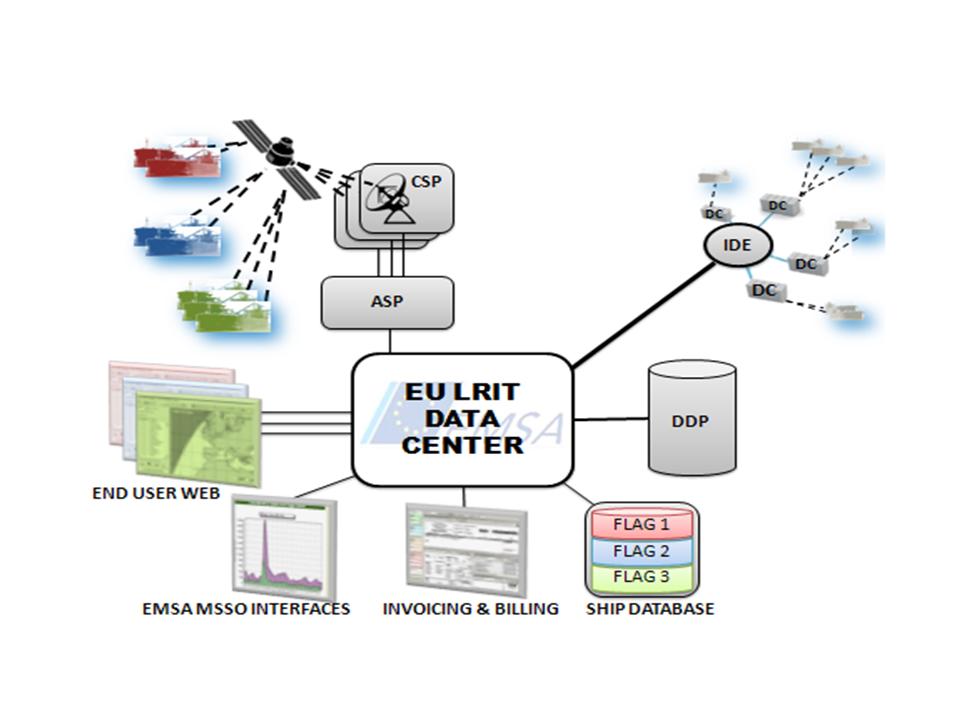How it works
LRIT CDC - How it works
 A ship in transit sends a position report via its shipborne equipment. The message includes the shipborne equipment identifier, positional data latitude and longitude, and the date and time of the transmission.
A ship in transit sends a position report via its shipborne equipment. The message includes the shipborne equipment identifier, positional data latitude and longitude, and the date and time of the transmission.
The system specifies that flag States should ensure that a minimum of four position messages per ship per day (every 6 hours) are sent, though the frequency of messages can be changed to a maximum of once every 15 minutes through a user request.
The message is received by a telecommunications satellite. The communication networks used for LRIT are Iridium and Inmarsat (C and D+). The satellites are operated by a Communication Service Provider (CSP), which provides the communication infrastructure and services to link the various parts of the LRIT system, using communications protocols in order to ensure the end-to–end secure transfer of the LRIT information. The data is then transmitted to the Application Service Provider (ASP).
The ASP completes the LRIT information of the vessel by adding the ship identity (IMO identification number and the MMSI number for the ship) as well as the date and time the position report is received and forwarded by the ASP. The new extended message generated by the ASP is then passed to the EU LRIT Cooperative Data Centre, which completes the ship identification by adding the ship name. The ASP also ensures that the LRIT information is routed in a reliable and secure manner.
The EU LRIT CDC collects and distributes data to Contacting Governments according to the Data Distribution Plan, which defines rules and rights for access (which users can receive what LRIT information). The EU LRIT CDC also interacts with the LRIT International Data Exchange. Certain aspects of the performance of the LRIT system are reviewed or audited by the LRIT Coordinator acting on behalf of the IMO and its Contracting Governments.
EMSA has put in place an invoicing and billing system for the invoicing of costs associated with the use of the EU LRIT CDC and requesting of LRIT reports. This also enables the clearance of payments with other data centres worldwide. Certain aspects of the performance of the EU LRIT system, including this invoicing and billing system, are reviewed and audited by an LRIT Coordinator, currently IMSO (International Mobile Satellite Organisation), acting on behalf of all SOLAS Contracting Governments.
